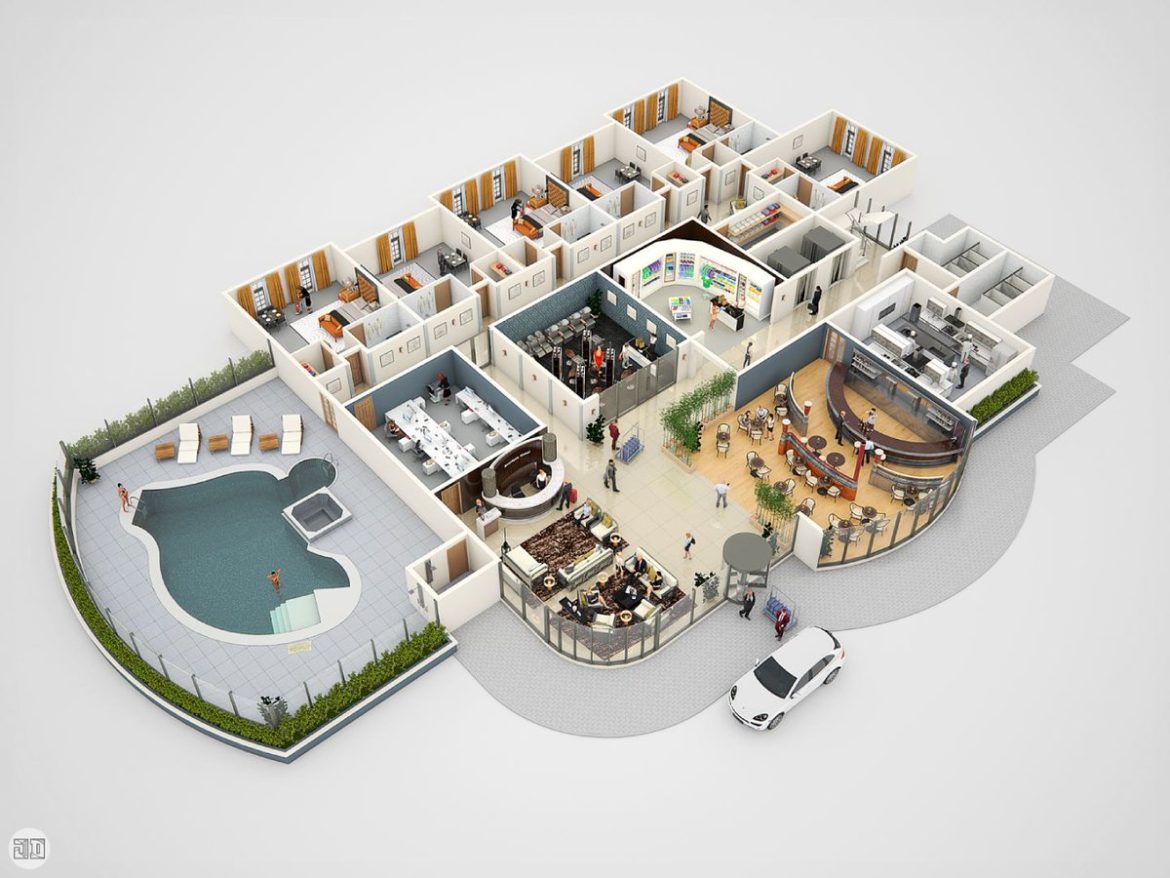Architectural animation has become an essential part of the design process in recent years. It is a powerful tool that helps architects and designers to communicate their ideas and concepts to clients and stakeholders. One of the most popular types of architectural animation is 3D walkthrough animation. In this article, we will explore the process of 3D walkthrough animation for architecture in detail.
What is 3D Walkthrough Animation?
3D walkthrough animation company can help you in creating an animated virtual tour of a building or space. It is a realistic representation of the building or space that allows the viewer to experience it as if they were actually there. 3D walkthrough animation is created using 3D software and can include details such as lighting, textures, and materials to provide a more realistic experience.
The Process of 3D Walkthrough Animation
The process of creating a 3D walkthrough animation involves several steps. Here are the main steps:
1. Conceptualization: The first step in creating a 3D walkthrough animation is to conceptualize the design and layout of the space or object that will be animated. This involves creating a rough sketch or blueprint of the space, deciding on the style and mood of the animation, and determining the key features and elements that will be highlighted in the walkthrough.
2. Modeling: Once the concept is finalized, the next step is to create a 3D model of the space or object. This involves using specialized software to create a detailed digital model, complete with textures, colors, and lighting.
3. Animation: After the model is created, the next step is to animate the walkthrough. This involves creating a sequence of movements and actions that will be used to showcase the space or object. Animators use specialized software to create realistic movements and interactions between objects and characters.
4. Rendering: Once the animation is complete, the next step is to render the final output. This involves using specialized software to convert the 3D model and animation into a high-quality video or image format.
5. Post-production: After the rendering is complete, the final step is to add any finishing touches to the animation. This may include adding sound effects, music, or voiceovers, as well as editing and color grading the final output to ensure it meets the desired quality standards.
The Benefits of 3D Walkthrough Animation for Architecture
D walkthrough animation offers several benefits for architects and designers. Here are some of the main benefits:
1. Better Visualization: 3D walkthrough animation allows architects and designers to create a realistic visualization of their designs, which helps clients to better understand the final product.
2. Enhanced Communication: With the help of 3D walkthrough animation, architects and designers can communicate their ideas more effectively to their clients and stakeholders. This helps to reduce misunderstandings and ensures that everyone is on the same page.
3. Improved Design: 3D walkthrough animation allows architects and designers to identify any potential design flaws or issues before construction begins. This helps to save time and money in the long run.
4. Increased Efficiency: 3D walkthrough animation streamlines the design process, allowing architects and designers to make changes quickly and easily. This helps to save time and increase efficiency.
5. Competitive Advantage: By incorporating 3D walkthrough animation into their workflow, architects, and designers can set themselves apart from their competitors and attract more clients.
Conclusion
3D walkthrough animation is a powerful tool that can help architects and designers to communicate their ideas and concepts to clients and stakeholders. The process of creating a 3D walkthrough animation involves several steps, including gathering information, creating a 3D model, adding materials and textures, adding cameras, animating the cameras, and adding sound effects and music. The benefits of 3D walkthrough animation include improved communication, greater flexibility, cost savings, and a more realistic representation of the building or space. As technology continues to advance, we can expect 3D walkthrough animation to become an even more important part of the design process in the future.


